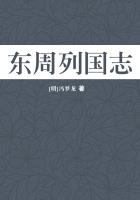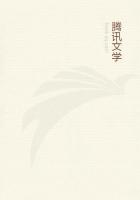We may now state distinctly the limitations which were implied under the words "in general" in our provisional wording of the law.The law is a statement of a tendency which may indeed be held in check for a time by improvements in the arts of production and by the fitful course of the development of the full powers of the soil; but which must ultimately become irresistible if the demand for produce should increase without limit.Our final statement of the tendency may then be divided into two parts, thus: --Although an improvement in the arts of agriculture may raise the rate of return which land generally affords to any given amount of capital and labour; and although the capital and labour already applied to any piece of land may have been so inadequate for the development of its full powers, that some further expenditure on it even with the existing arts of agriculture would give a more than proportionate return; yet these conditions are rare in an old country: and, except when they are present, the application of increased capital and labour to land will add a less than proportionate amount to the produce raised, unless there be meanwhile an increase in the skill of the individual cultivator.Secondly, whatever may be the future developments of the arts of agriculture, a continued increase in the application of capital and labour to land must ultimately result in a diminution of the extra produce which can be obtained by a given extra amount of capital and labour.
2.Making use of a term suggested by James Mill, we may regard the capital and labour applied to land as consisting of equal successive doses.(3*) As we have seen, the return to the first few doses may perhaps be small and a greater number of doses may get a larger proportionate return; the return to successive doses may even in exceptional cases alternately rise and fall.But our law states that sooner or later (it being always supposed that there is meanwhile no change in the arts of cultivation) a point will be reached after which all further doses will obtain a less proportionate return than the preceding doses.The dose is always a combined dose of labour and capital, whether it is applied by a peasant owner working unaided on his own land, or at the charges of a capitalist farmer who does no manual labour himself.But in the latter case the main body of the outlay presents itself in the form of money; and when discussing the business economy of farming in relation to English conditions, it is often convenient to consider the labour converted at its market value into a money equivalent, and to speak of doses of capital simply, rather than of doses of labour and capital.
The dose which only just remunerates the cultivator may be said to be the marginal dose, and the return to it the marginal return.If there happens to be in the neighbourhood land that is cultivated but only just pays its expenses, and so gives no surplus for rent we may suppose this dose applied to it.We can then say that the dose applied to it is applied to land on the margin of cultivation, and this way of speaking has the advantage of simplicity.But it is not necessary for the argument to suppose that there is any such land: what we want to fix our minds on is the return to the marginal dose; whether it happens to be applied to poor land or to rich does not matter; all that is necessary is that it should be the last dose which can profitably be applied to that land.(4*)When we speak of the marginal, or the "last" dose applied to the land, we do not mean the last in time, we mean that dose which is on the margin of profitable expenditure; that is, which is applied so as just to give the ordinary returns to the capital and labour of the cultivator, without affording any surplus.To take a concrete instance, we may suppose a farmer to be thinking of sending the hoers over a field once more; and after a little hesitation he decides that it is worth his while, but only just worth his while to do it.The dose of capital and labour spent on doing it, is then the last dose in our present sense, though there are many doses still to be applied in reaping the crop.Of course the return to this last dose cannot be separated from the others; but we ascribe to it all that part of the produce which we believe would not have been produced if the farmer had decided against the extra hoeing.(5*)Since the return to the dose on the margin of cultivation just remunerates the cultivator, it follows that he will be just remunerated for the whole of his capital and labour by as many times the marginal return as he has applied doses in all.
Whatever he gets in excess of this is the surplus produce of the land.This surplus is retained by the cultivator if he owns the land himself.(6*)It is important to note that this description of the nature of surplus produce is not a theory of rent: we shall not be ready for that till a much later stage.All that can be said here, is that this surplus produce may, under certain conditions, become the rent which the owner of the land can exact from the tenant for its use.But, as we shall see hereafter, the full rent of a farm in an old country is made up of three elements: the first being due to the value of the soil as it was made by nature; the second to improvements made in it by man; and the third, which is often the most important of all, to the growth of a dense and rich population, and to facilities of communication by public roads, railroads, etc.It is to be noted also that in an old country it is impossible to discover what was the original state of the land before it was first cultivated.The results of some of man's work are for good and evil fixed in the land, and cannot be distinguished from those of nature's work: the line of division is blurred, and must be drawn more or less arbitrarily.















